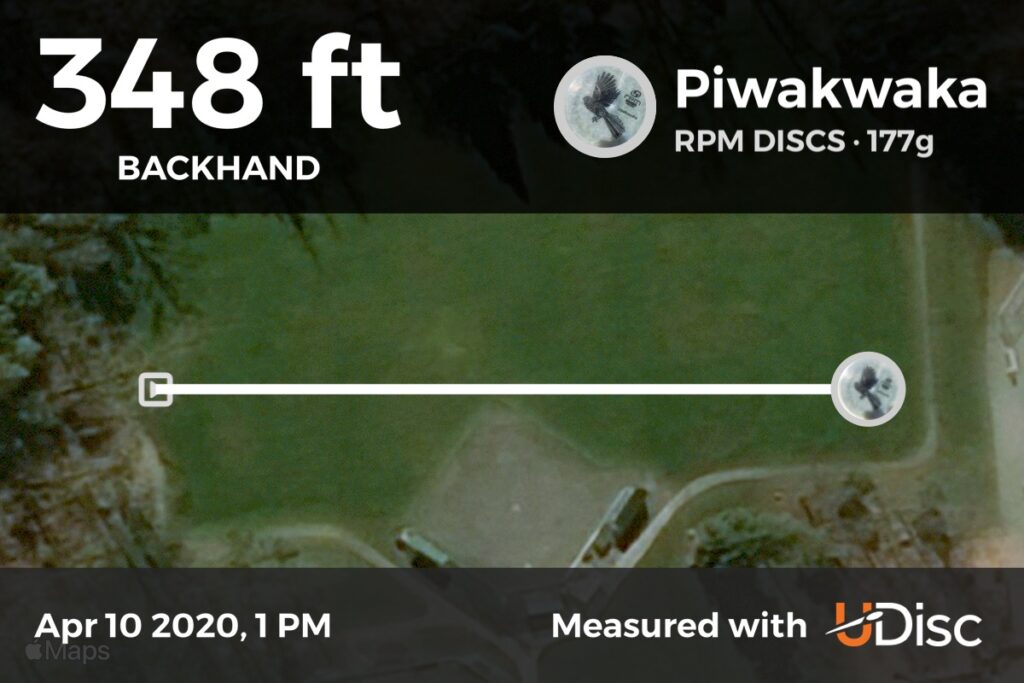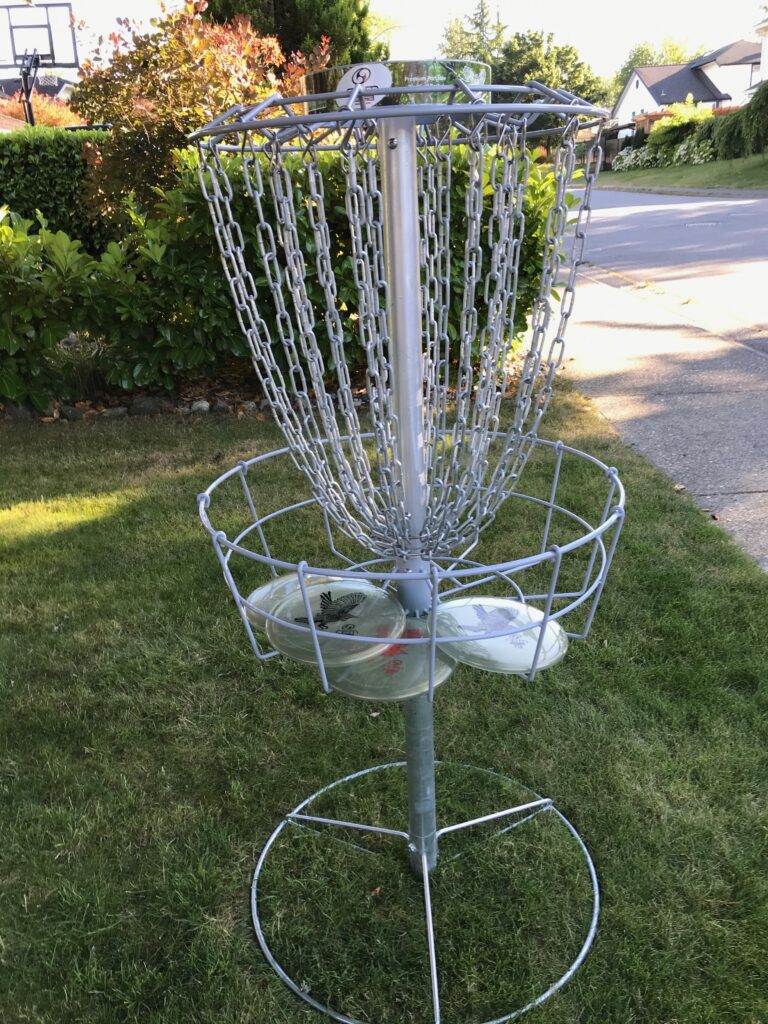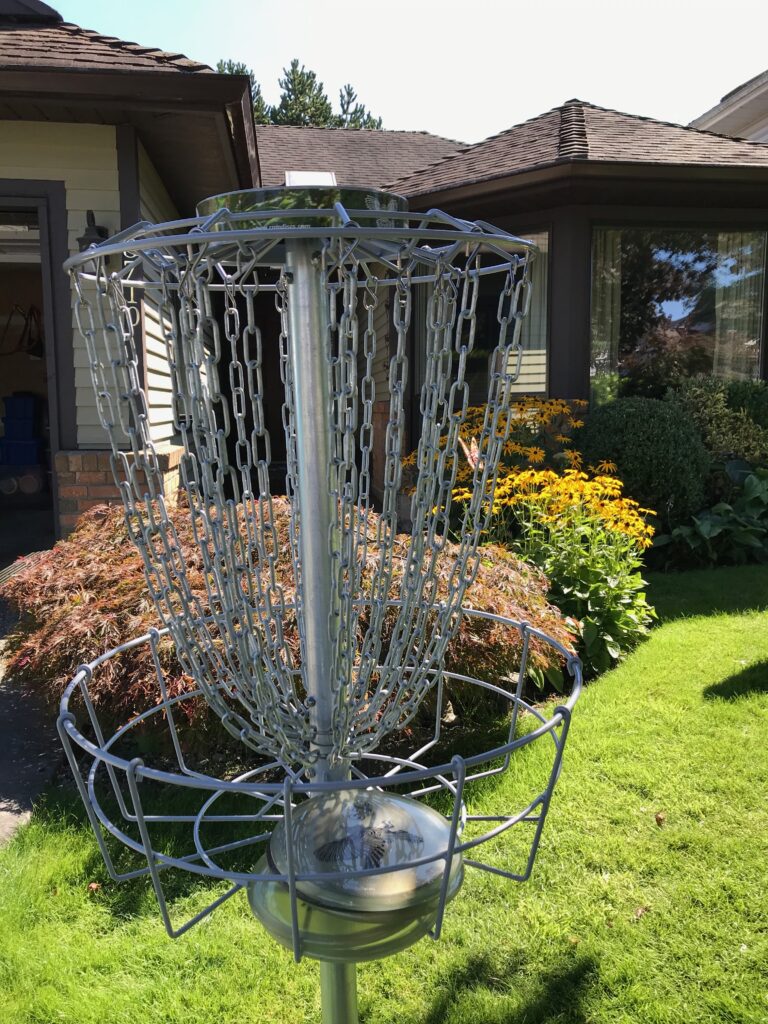Sometimes you see a product out on the disc golf course and you ask yourself, does that really do anything? When I first saw a Flight Towel I was skeptical, although once I discovered I could get one for a left handed thrower made from a Kahu disc from RPM, I’ll admit I jumped on it (and it does work as advertised for warming up and drying one’s disc).
I had the same reaction when I first heard of Friction Disc Golf Gloves. Originally created for Ultimate players, gloves made sense. The added grip for throws in the rain, the stickiness to maximize catches in the wet, the padding to cushion impact from those hard hucks, even the added warmth on cold game days all made sense to me in the context of a deep rimmed ultimate disc. But on a shallow rimmed disc golf disc? Wouldn’t the glove catch the rim awkwardly? Don’t we need the touch and feel of the plastic to help control our drives and putts?
I first saw one of the gloves in use at the 2019 WFDF World Team Disc Golf Championships in Estonia. Carter Ahrens, at the time a 12-year-old phenom on Team USA, was sporting the gloves. Even at 12, it was apparent Carter would be a force to be reckoned with in disc golf (he’s now playing pro–at age 14 folks–with a 975 player rating!).
A few months after this event, I saw a post on Facebook about Carter being sponsored by Friction Gloves, so I purchased my first pair of gloves in support.
When I first tried them out, I immediately felt the benefits. I was able to get more snap and a tighter grip on the disc, but I still wasn’t sold as it felt awkward holding the discs. I also felt like I needed to keep putting them on to drive and taking them off to putt, which was cumbersome to manage. That said, the added control felt good so I decided to give the gloves a two week trial.
Almost two years later, I have to admit I’m hooked. As I noted, the added grip strength gave me a lot more reliability on my drives (discs weren’t slipping out on hard throws, for example). I also found it was easier to control my lines, particularly on anhyzer shots, where discs have a tendency to slip out early. What really sold me on the gloves, however, was their affect on my fan grip shots.
For years my friends had been telling me to throw more long midrange and putter shots. For anything 200 feet and up I was throwing drivers because I found I couldn’t control midranges with a power grip (talk about some impressive cling-ons!), and my putting grip couldn’t get me any distance. Trying a fan grip was uncomfortable as the disc tended to scrape out of my hand when gripping it tightly. With the Friction Glove on, however, using a fan grip was quite comfortable and the added stickiness from the glove’s contact surface across the bottom plate of the disc and my thumb pad on the top allowed me to get excellent snap and power on my throws. My fan grip midrange throws now fly accurately up to and beyond 300 feet.

I also committed to keeping the glove on at all times, rather than take it off for putting. I found after a couple of weeks of regular use, I was putting as well (or better) with the glove on as I had without a glove.
Over the past year, a lot of players have asked me about the glove and I’ll quickly answer a few common questions here:
- Does it help in the rain?
- Sort of… It does give a better grip, and it helps keep my hand warmer when the disc is damp. That said, it is harder to feel how wet everything actually is, and there are times I end up using a wet towel to dry my wet disc and throw with my wet glove. Bottom line, you still need to keep your equipment as dry as possible.
- Why wear it all the time?
- I wear it all the time for both convenience and consistency. It’s easier and more comfortable to keep it on, and I do get value from the added grip on all my throws.
- Isn’t it hot in the summer?
- Not at all. The summer gloves have a breathable mesh backing that keeps my hand cool and dry.
- Does it keep you warm in the winter?
- Not really. See comment above. That said, Friction does make a winter glove (Friction Warms). I’ve used them in the snow and it was really helpful, however they are bulky, so for competitive tournament rounds I stick with the normal glove.
- Can I have your right hand glove since you don’t need it? 😁
- This is the best part! Friction Gloves are sold as a pair or singly, so I just buy the lefty gloves.
- How well do they hold up?
- You get a good idea of how hard disc golf is on your hands by watching the wear and tear on the gloves. I play 2-3 days a week (so think 160-320 throws every week, 8,300 – 16,600 throws a year) plus fieldwork and putting practice) and seem to go through three or four gloves in a season (disc golf having two seasons, warm and cold). That said, I’ve only ever used one glove down to the state where I felt is was best to throw it out and I usually have three or four going at any one time (as I misplace them or change bags, etc.). Mostly I rotate through whichever glove is handy, so it’s hard to really keep track.
- Will you ever go back to throwing bear handed?
- Nope!
One final note–at a recent tournament a friend asked if I thought they would be helpful in supporting someone with a weak grip. As we age (I’m playing grandmasters remember) we may develop arthritis or other age-related physical challenges that weaken our grip strength. I allowed as how I imagined they would and he now plans to try them out. I hadn’t considered the gloves from that perspective, but I do think they would be helpful. I’ll let you know what I hear back.






